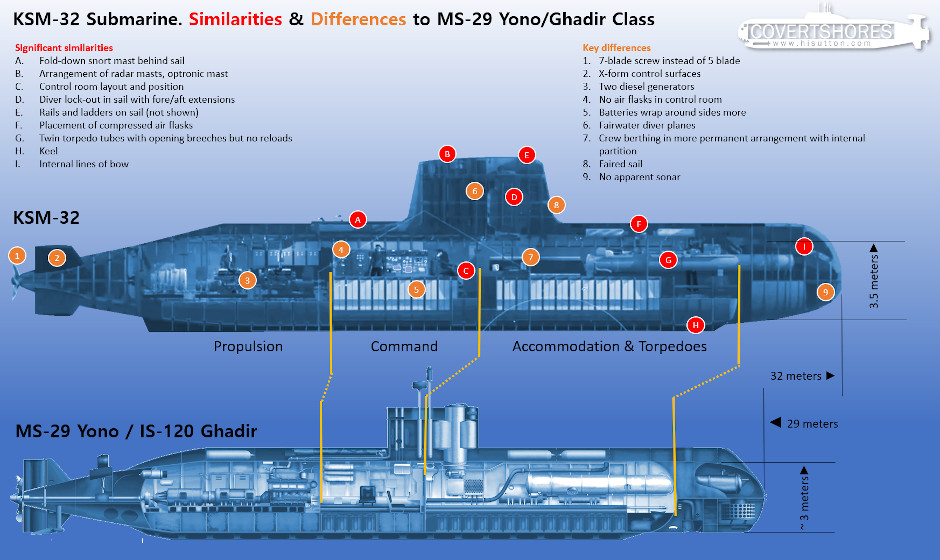Indonesian Navy's KSM 32 Midget Submarine
 The KSM-32 (Kapal Selam Mini) is an indigenous midget submarine design from Indonesia. It has been developed by the BPPT (Badan Pengkajian dan Penerapan Teknologi / Agency for the Assessment and Application of Technology) as a stepping stone towards full-scale submarine construction. Design concepts began in 2016, then actual design from 2017 to 2019.
The KSM-32 (Kapal Selam Mini) is an indigenous midget submarine design from Indonesia. It has been developed by the BPPT (Badan Pengkajian dan Penerapan Teknologi / Agency for the Assessment and Application of Technology) as a stepping stone towards full-scale submarine construction. Design concepts began in 2016, then actual design from 2017 to 2019.
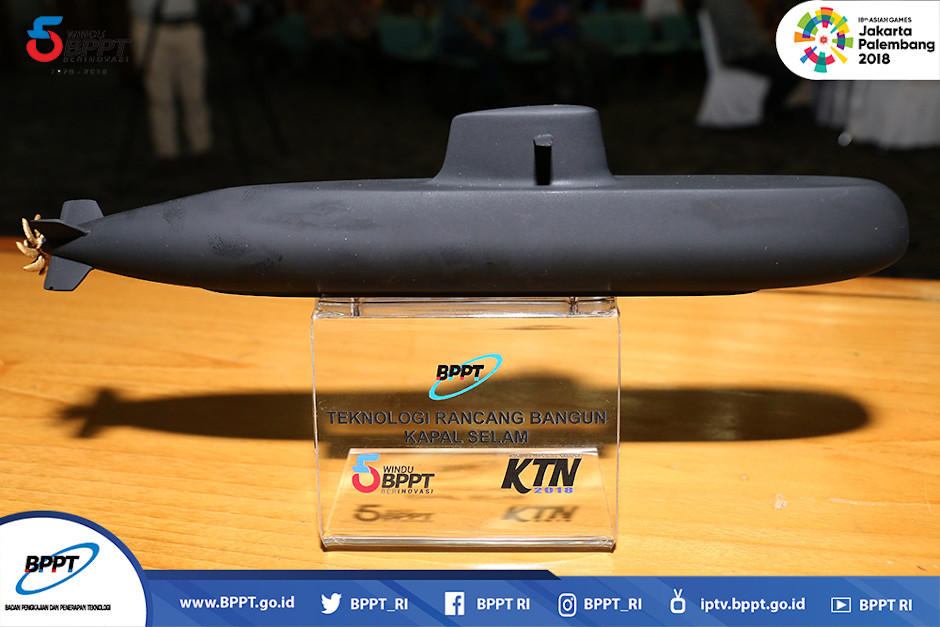

Why Midget Submarines?
Although Indonesia operates four Type-209 family conventional submarines, its navy is comparatively small when compared to its areas of operations. The country has an incredible 54,720 km of coastline and over 13,000 islands. And unlike the situation facing many other navies, Indonesian waters may be well suited to midget submarines.
Indonesia sits astride major sea lines of communication (SLOC) connecting the Indian Ocean with the South China Sea and Pacific. This makes it a likely area of operations for foreign warships in any regional conflict, even one not involving Indonesia. At the same time the waters are shallow in places and have complex currents and water conditions which could hamper foreign anti-submarine operations. And, relative to many other areas on the globe, the waters are unmapped by foreign powers (although Chinese UUVs have been found on several occasions).
Get The essential guide to World Submarines
This Covert Shores Recognition Guide Covers over 80 classes of submarines including all types currently in service with World Navies.Check it out on Amazon
There are numerous choke points, not least the Straits of Malacca, Lombok, Sunda, Makassar and Alas Strait. Midget submarines could be used to monitor and, lay mines or sensors and, if called upon, ambush ships passing through these areas. They could also be used for special forces missions, deploying Indonesia's elite Kopaska combat swimmer unit. These have their own range of Swimmer Delivery Vehivles (SDVs).
At the same time midget submarines represent a natural first step for a country building its indigenous submarine building capabilities. Indonesia is already locally producing the South Korean Type-209/1400 Chang Bogo-class, known locally as the Nagapasa-class. Midget submarines would be quicker, cheaper and lower risk than entering into a full-sized indigenous program.

Hydrodynamic testing model
The Yono / Ghadir comparison
Perhaps surprisingly for a country building submarines with South Korean assistance, the internal details of the KSM 32 bears a strong resemblance to the North Korean MS-29 Yono Class. This is also built by Iran as the IS-120 Ghadir Class, and the older Yugo class is operated by Vietnam and for a time, South Korea (captured example).
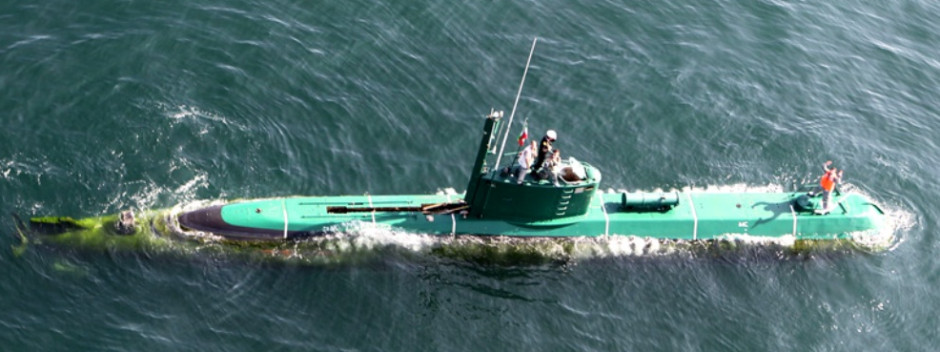
The Iranian Ghadir class may look different on the outdside, but under the steel shell is a very similar boat.
This video on YouTube has excellent 3d models of the design. Both submarines follow the same general plan.
The KSM is larger than the Yono, being 3 meters (10 feet) longer and, more significantly, 0.5m (1.6 ft) larger diameter.
Learn EVERYTHING about Special Forces subs Covert Shores 2nd Edition. A world history of naval Special Forces, their missions and their specialist vehicles. SEALs, SBS, COMSUBIN, Sh-13, Spetsnaz, Kampfschwimmers, Commando Hubert, 4RR and many more.
Check it out on Amazon
Earlier Kapal Selam Mini
Previously in 2016-17 Indonesian engineers were showcasing 22 meters midget submarines. This design came in two variations.
The first, KSM-22, was designed by BPPT together with the ministry of Defense Balitbang and University of Indonesia. Like the latest model it had X-form rudders and sail mounted hydroplanes. Differences included the absence of torpedo tubes and a lock-out chamber in the forward section, exiting through the deck (also similar to some North Korean subs).
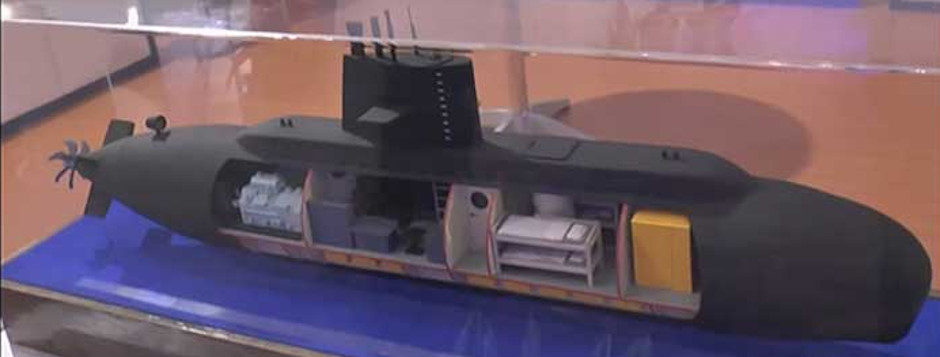
KSM-22. Note the pop-our outboard thruster, a feature seen on the Yono/Ghadir family.
The other 22m design was developed by the Indonesian Navy Research and Development Agency (Dislitbangal) and PT Palindo Marine. This had an overall similar hull layout but differed in a cruciform tail arrangement and large dive planes well forward near the bow instead of the sail. This is described as having 4 torpedoes although I am unsure whether they would be carried internally. It also possibly had a contra-rotating screw, at least in some iterations.
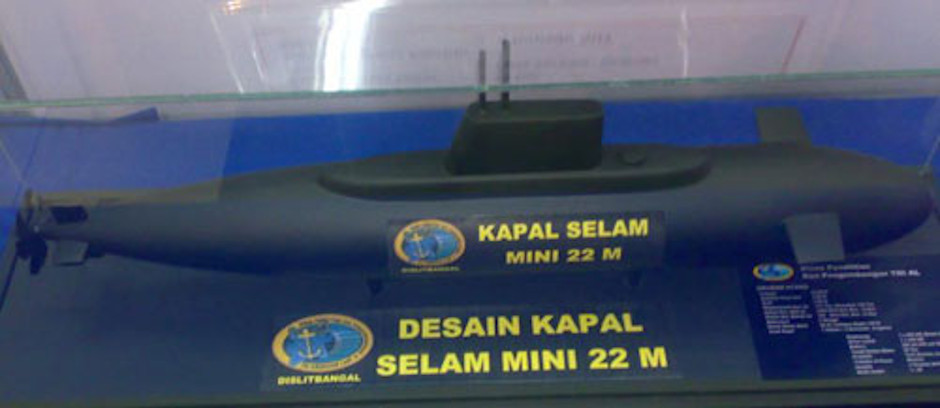
Dislitbangal 22m
| Available Data | Dislitbangal 22m | KSM 22 | KSM 29 | KSM 32 |
|---|---|---|---|---|
| Length (m) | 22 | 22 | 29 | 32 |
| Hull diameter (m) | 3 | 3 | 3 | 3.5 |
| Submerged displacement (tons) | 133 | 127.1 | 151 | |
| Underwater cruising speed (kt) | 8 | 8 | 7 | |
| Underwater maxium speed (kt) | 14 | 10 | 15 | |
| Operating depth (m) | 140 | 100-150 | 60 | 150 |
| Crew + PAX | 11 | 5+9 | 8+4 | |
| Submerged endurance (days) | 3 | 3 | ||
| Torpedoes (533mm) | 4 | 0 | 2 | 2 |
Outlook
It seems unlikely that the KSM-32 will be built, although there are likely those hoping that it will. Indonesia had already identified a need for more submarines, even before the tragic loss of KRI Nanggala (402) last month. But it is likely to opt for full size submarines. Local production seems very likely, but whether Indonesia will take the risk on an indiginous design remains to be seen.
Related articles (Full index of popular Covert Shores articles)

 North Korean MS-29 YONO Class midget sub. w/Cutaway
North Korean MS-29 YONO Class midget sub. w/Cutaway

 Iranian Fateh Class submarine w/Cutaway
Iranian Fateh Class submarine w/Cutaway

 Drass DG-900 Compact Submarine
Drass DG-900 Compact Submarine

 Kalvari Class (Scorpene) Submarine w/Cutaway
Kalvari Class (Scorpene) Submarine w/Cutaway

 Chinese Type-093 Shang Class Submarine w/Cutaway
Chinese Type-093 Shang Class Submarine w/Cutaway

 Iranian Nahang Class midget sub
Iranian Nahang Class midget sub





